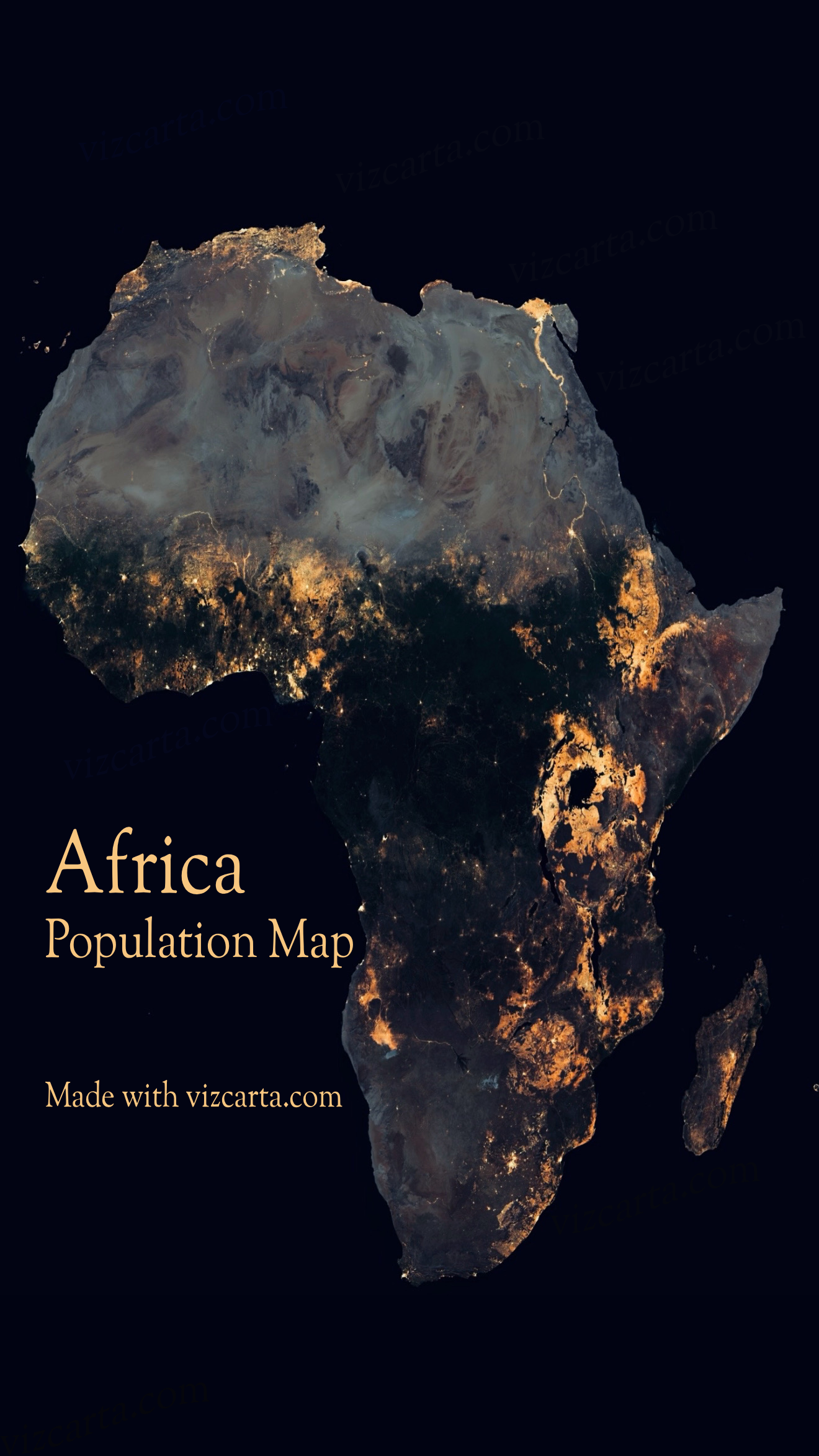Africa Population Map


David Chen
Data Visualization Specialist
David Chen is an expert in transforming complex geographic datasets into compelling visual narratives. He combines his background in computer science ...
Geographic Analysis
What This Map Shows
The Africa Population Map provides a visual representation of the demographic distribution across the continent. It illustrates not only the total population figures but also highlights population density variations in urban and rural settings. This visualization allows us to see where the largest populations are concentrated, the growth trends in various regions, and the implications of these patterns on resources, infrastructure, and social dynamics.
Deep Dive into Africa's Population
Africa is home to over 1.3 billion people, making it the second most populous continent in the world after Asia. The population growth rate in Africa is one of the highest globally, with projections indicating that by 2050, the continent's population could double. This rapid expansion is driven by several factors, including high birth rates and improvements in healthcare that have significantly reduced mortality rates.
Interestingly, the population distribution is not uniform across the continent. Urban areas are experiencing explosive growth, while many rural regions are seeing population declines as people migrate to cities in search of better opportunities. For instance, cities like Lagos, Nigeria, and Cairo, Egypt, are among the fastest-growing metropolises, with populations swelling into the tens of millions. Lagos alone is projected to reach 24 million residents by 2025, becoming one of the largest cities in the world.
The demographic composition of Africa is also distinctive. Over 60% of the population is under the age of 25, which presents both opportunities and challenges. The youth bulge can drive economic growth if adequately harnessed, but it also raises concerns regarding unemployment and the need for educational resources. Have you noticed how the youth in Africa are increasingly embracing technology and entrepreneurship? This trend could transform the continent's economic landscape over the next few decades.
Moreover, ethnic diversity plays a crucial role in shaping the demographic tapestry of Africa. With over 3,000 ethnic groups, the continent's cultural richness is vast. However, demographic pressures can exacerbate ethnic tensions, particularly in regions where resources are scarce. For instance, the Sahel region, which includes parts of Mali, Niger, and Burkina Faso, faces challenges from both population pressure and climate change, leading to conflict over land and water resources.
Regional Analysis
When we take a closer look at the different regions of Africa, we can see marked differences in population density and growth rates. North Africa, for example, is characterized by a relatively stable population, with significant concentrations in urban areas like Casablanca, Algiers, and Tunis. However, the birth rates in this region are lower than those in Sub-Saharan Africa, which is experiencing rapid growth, particularly in countries like Nigeria, Ethiopia, and the Democratic Republic of the Congo.
In East Africa, countries such as Kenya and Tanzania are seeing urbanization rates soar, with cities like Nairobi and Dar es Salaam growing quickly. The East African Community has also been working to improve infrastructure and connectivity, which is essential to accommodate this growth.
Conversely, Southern Africa presents a different picture. While South Africa has a well-established urban structure, it also faces challenges such as high unemployment and significant disparities in wealth. Zimbabwe and Zambia, on the other hand, have experienced population growth but are grappling with economic difficulties that affect demographic trends.
Interestingly, West Africa stands out with Nigeria leading as the most populous country on the continent, and it is projected to surpass the United States in population by 2050. This unprecedented growth could have substantial implications for regional stability, economic opportunities, and environmental sustainability.
Significance and Impact
Understanding population dynamics in Africa is crucial for several reasons. Firstly, it highlights the need for effective governance and planning to address the challenges posed by rapid urbanization, such as housing shortages, transportation issues, and environmental degradation. Moreover, as Africa continues to develop economically, the significance of its youthful population cannot be overstated. The potential for innovation, entrepreneurship, and a robust workforce could position Africa as a significant player in the global economy.
However, there are also pressing concerns. With population growth comes the need for increased food production, healthcare access, and educational resources. Addressing these needs is vital for fostering sustainable development. The implications of these demographic trends extend to global markets, migration patterns, and international relations.
In conclusion, the Africa Population Map is more than just a visualization; it is a critical tool for understanding the complex interplay between demographics, culture, and economic development on the continent. As we move into the future, the trends highlighted by this map will play a pivotal role in shaping the lives of millions.
Visualization Details
- Published
- October 6, 2025
- Views
- 10
Comments
Loading comments...